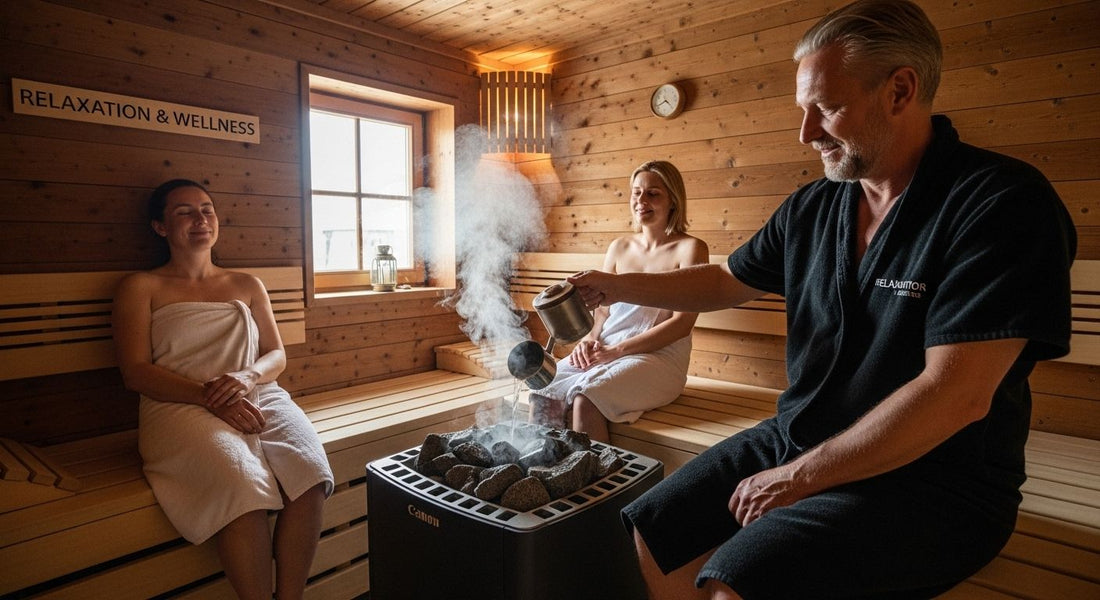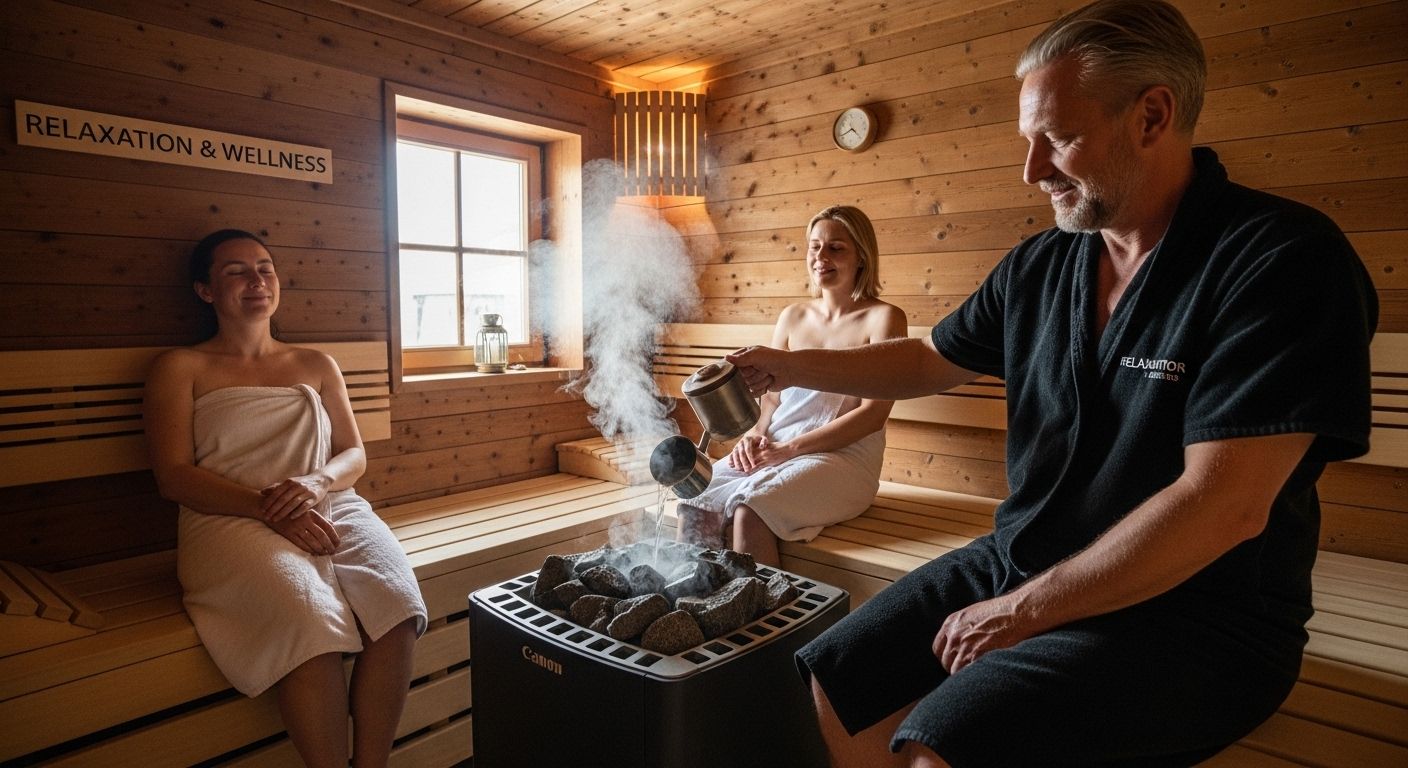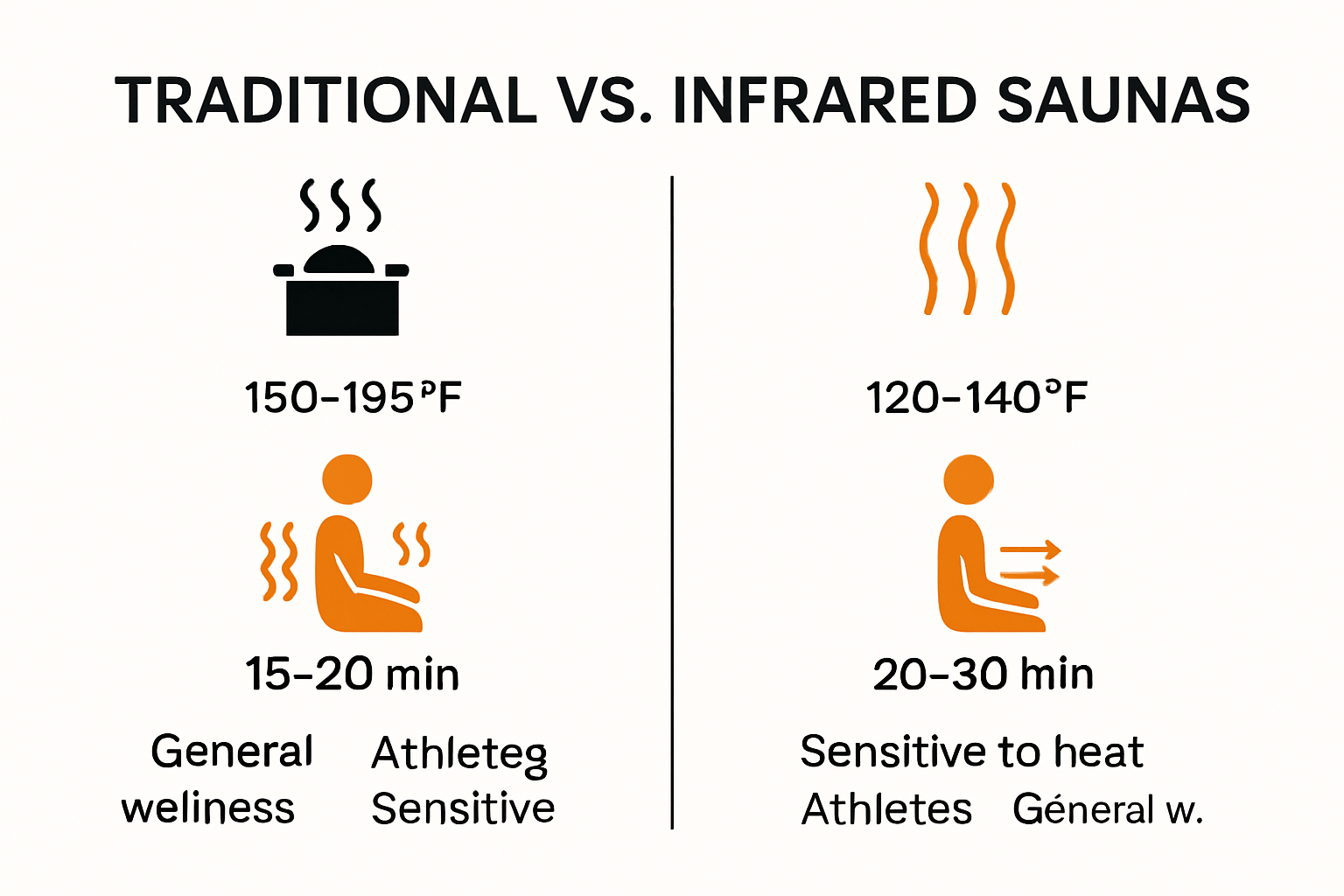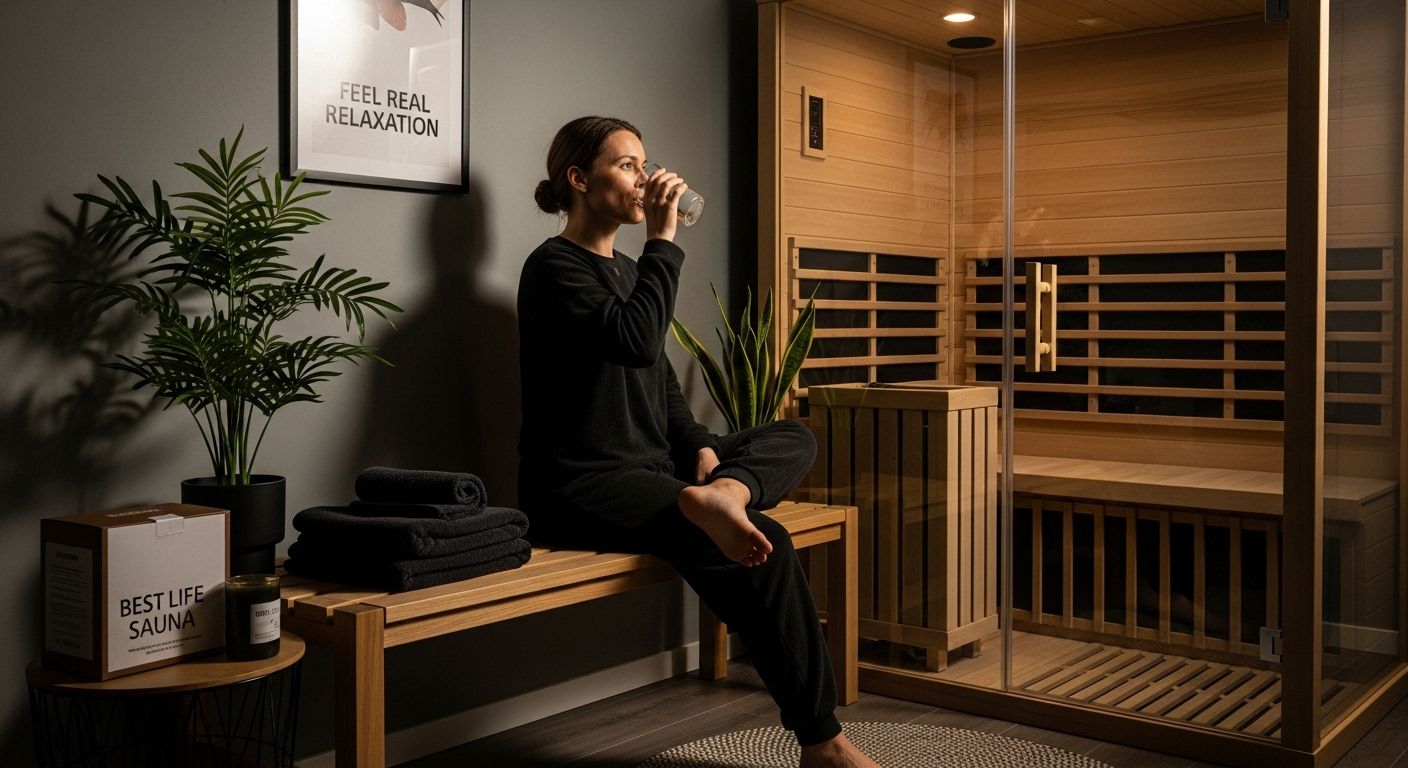
Understanding Using Saunas for Relaxation and Wellness
Saunas are more than just hot rooms. These heated spaces can reach up to 195 degrees Fahrenheit and trigger some surprising changes in your body. Most people think the benefits stop at basic relaxation, but research shows regular sauna use can actually lower stress, sharpen your mind, and help you sleep better. The science behind these sweat sessions goes much deeper than you might expect.

Table of Contents
- What Is A Sauna And How Does It Promote Relaxation?
- The Science Behind Heat Therapy And Its Benefits
- Why Using Saunas For Relaxation Matters For Your Health
- Exploring The Different Types Of Saunas And Their Effects
- Key Concepts In Sauna Use: Frequency, Duration, And Hydration
Quick Summary
| Takeaway | Explanation |
|---|---|
| Saunas enhance relaxation and stress relief. | Exposure to heat stimulates circulation and promotes the release of endorphins, providing a deep sense of calm. |
| Regular sauna use improves mental health. | Consistent sessions can reduce anxiety, enhance mood, and improve cognitive function through stress management. |
| Hydration is crucial before and after sauna use. | Intense sweating can lead to dehydration, so drinking water and maintaining electrolyte balance are essential for recovery. |
| Different sauna types offer unique benefits. | Traditional and infrared saunas vary in heat exposure methods and temperatures, catering to individual health preferences and goals. |
| Optimal sauna sessions last 15-20 minutes. | This duration is recommended for maximizing health benefits while ensuring safety and comfort levels are maintained. |
What is a Sauna and How Does It Promote Relaxation?
A sauna represents a specialized heated room or small building designed to provide therapeutic warmth and promote profound physical and mental relaxation. Originating in Finland, this wellness practice involves exposing the body to high temperatures, typically between 150 and 195 degrees Fahrenheit, which triggers a range of physiological responses that contribute to stress reduction and overall well-being.
Understanding Sauna Environment and Mechanisms
Saunas create a controlled heat environment that stimulates the body’s natural relaxation mechanisms. When you enter a sauna, your body experiences an immediate thermal response where blood vessels dilate, increasing circulation and promoting a sense of deep physical calm. According to research from Mayo Clinic Proceedings, these physiological changes can significantly impact cardiovascular health and stress management.
The heat exposure in a sauna initiates several key relaxation processes:
- Increased production of endorphins, the body’s natural “feel good” hormones
- Enhanced blood flow and circulation throughout muscle groups
- Activation of the parasympathetic nervous system, which reduces stress responses
Psychological and Physical Benefits of Sauna Use
Beyond the immediate physical sensations, using saunas for relaxation provides profound psychological benefits. The controlled heat environment creates a meditative space where external stressors temporarily fade, allowing mental and emotional reset. The combination of heat, isolation, and controlled breathing promotes a state of mindfulness that can dramatically reduce anxiety and tension.
Research demonstrates that consistent sauna sessions can have long-term wellness impacts. Regular sauna use has been linked to improved stress management, better sleep quality, and enhanced overall mental resilience. The thermal experience triggers the body’s natural relaxation responses, helping individuals develop more effective stress coping mechanisms.
By understanding saunas as more than just heated rooms, individuals can appreciate them as holistic wellness tools that address both physical tension and mental strain through a simple yet powerful thermal experience.
The Science Behind Heat Therapy and Its Benefits
Heat therapy represents a sophisticated physiological intervention that leverages the body’s natural responses to thermal stimulation. By strategically exposing the body to controlled heat environments, individuals can activate complex biological mechanisms that promote healing, relaxation, and overall wellness.
Physiological Mechanisms of Heat Exposure
When the body encounters elevated temperatures, intricate biochemical and neurological processes are triggered. According to research from Mayo Clinic Proceedings, heat exposure initiates a series of protective and regenerative responses that significantly impact multiple bodily systems.
The primary physiological responses during heat therapy include:
- Vasodilation of blood vessels, improving circulatory efficiency
- Activation of heat shock proteins that protect cellular structures
- Enhanced metabolic rate and increased sweating for toxin elimination
Cellular and Systemic Responses to Thermal Stimulation
Heat therapy works at multiple biological levels, engaging both cellular and systemic mechanisms. When body temperature rises, the hypothalamus activates thermoregulatory processes that stimulate cardiovascular and neurological adaptations. This thermal stress induces a controlled hormetic response, where mild physiological challenges prompt the body to become more resilient and efficient.
Key systemic benefits include improved immune function, accelerated tissue repair, and enhanced stress resistance. The body responds to controlled heat exposure by releasing endorphins, reducing inflammation, and promoting cellular repair mechanisms. These responses contribute to improved overall physiological functioning and psychological well-being.
By understanding heat therapy as a sophisticated biological intervention, individuals can appreciate its potential to support holistic health through precise thermal stimulation. The science reveals heat not merely as a sensation, but as a powerful catalyst for bodily regeneration and stress management.
Why Using Saunas for Relaxation Matters for Your Health
Relaxation is not merely a luxury but a critical component of maintaining optimal physical and mental health. Saunas provide a unique, scientifically backed method for achieving deep relaxation that extends far beyond momentary comfort, offering comprehensive wellness benefits that address multiple aspects of human health.
Mental Health and Stress Reduction
In our increasingly high-stress modern world, finding effective relaxation techniques is paramount. According to research from the National Institutes of Health, sauna use represents a powerful intervention for stress management. The controlled heat environment triggers a cascade of neurochemical responses that actively combat stress, reducing cortisol levels and promoting a state of mental calm.
Key mental health benefits of sauna relaxation include:
- Decreased anxiety and depression symptoms
- Improved mood regulation
- Enhanced cognitive function and mental clarity
Physiological Wellness and Long-Term Health Impacts
Regular sauna sessions deliver profound physiological benefits that extend well beyond immediate relaxation. The thermal experience stimulates the body’s natural healing mechanisms, creating a holistic wellness intervention. By reducing chronic stress, saunas contribute to preventing stress-related health complications such as hypertension, cardiovascular disorders, and compromised immune function.
The relaxation process in saunas activates the parasympathetic nervous system, which is responsible for rest and recovery. This activation helps reset the body’s stress responses, promoting better sleep patterns, improved hormonal balance, and enhanced overall resilience. The cumulative effect of consistent sauna use can lead to significant improvements in both mental and physical health, making it a powerful tool for comprehensive wellness management.
Understanding saunas as more than a temporary escape, but as a strategic health intervention, empowers individuals to proactively manage their well-being through intentional relaxation practices.
Exploring the Different Types of Saunas and Their Effects
Saunas represent a diverse wellness technology with multiple variations, each offering unique therapeutic approaches to heat exposure and relaxation. Understanding the different types of saunas helps individuals select the most appropriate option for their specific health and wellness goals.
Traditional and Infrared Sauna Technologies
Traditional saunas and infrared saunas represent two primary technological approaches to heat therapy. According to research from the Mayo Clinic, these technologies produce distinct physiological responses that can significantly impact overall health and wellness.
Key differences between traditional and infrared saunas include:
- Heat distribution method (ambient air vs direct light waves)
- Temperature range (traditional: 150-195°F, infrared: 110-135°F)
- Depth of heat penetration into body tissues
- Intensity of sweating and detoxification processes
Specialized Sauna Variants and Therapeutic Applications
Modern sauna technologies have expanded beyond traditional heat exposure, offering specialized variants designed for specific wellness objectives. Wood-burning saunas provide a classic, authentic experience with rich thermal dynamics, while electric saunas offer precise temperature control and convenience. Infrared saunas represent a revolutionary approach, using light waves to directly warm body tissues without extensively heating surrounding air.
Each sauna type offers unique benefits. Infrared saunas may provide gentler heat suitable for individuals sensitive to high temperatures, potentially supporting cardiovascular health and pain management. Traditional Finnish-style saunas deliver intense heat experiences that promote profound sweating and muscular relaxation. Steam saunas introduce humidity, which can enhance respiratory function and skin hydration.

By understanding the nuanced characteristics of different sauna technologies, wellness enthusiasts can make informed choices that align with their individual health requirements and relaxation preferences.
To help you compare sauna technologies and select the best option for your needs, the following table outlines the key differences and unique benefits of traditional and infrared saunas discussed in the article.
| Sauna Type | Heat Source | Typical Temperature | Heat Penetration | Unique Benefits |
|---|---|---|---|---|
| Traditional Sauna | Heated Air | 150-195°F | Surface and shallow body | Intense sweating, muscle relaxation, classic feel |
| Infrared Sauna | Infrared Light Waves | 110-135°F | Deep tissue | Gentler on heat-sensitive users, pain management |
| Steam Sauna | Electric/Steam | Variable | Surface (with humidity) | Enhanced skin hydration, respiratory benefits |
| Wood-Burning Sauna | Wood Stove | 150-195°F+ | Surface and shallow body | Authentic experience, rich thermal dynamics |
| Electric Sauna | Electric Heater | 150-195°F | Surface and shallow body | Convenient temperature control, quick heating |
Key Concepts in Sauna Use: Frequency, Duration, and Hydration
Optimizing sauna experiences requires understanding critical parameters that ensure safety, effectiveness, and maximum therapeutic benefit. While saunas offer remarkable wellness advantages, strategic implementation determines the quality of physical and mental outcomes.
Establishing Optimal Sauna Session Parameters
The duration and frequency of sauna sessions play pivotal roles in determining health benefits. According to research from the Cleveland Clinic, establishing appropriate session guidelines is crucial for maximizing physiological responses and preventing potential health risks.
Key considerations for sauna session management include:
- Recommended session length of 15-20 minutes
- Gradual temperature acclimation for first-time users
- Monitoring individual heat tolerance and comfort levels
Hydration and Recovery Strategies
Proper hydration represents the cornerstone of safe and effective sauna use. The intense thermal environment triggers significant perspiration, which can rapidly deplete bodily fluids and electrolytes. Maintaining robust hydration before, during, and after sauna sessions is essential for preventing dehydration and supporting physiological recovery.
Comprehensive hydration strategies involve more than simply drinking water. Individuals should focus on electrolyte balance, consuming water-rich foods, and understanding their personal sweat rate. For most people, consuming two to four glasses of water before and after sauna sessions helps replenish lost fluids and supports the body’s natural thermoregulatory processes.
By approaching sauna use as a nuanced wellness practice that requires personalized attention and strategic planning, individuals can transform thermal therapy into a powerful tool for holistic health management.
Here is a table summarizing the practical guidelines for sauna session management, including recommended frequency, duration, and key hydration strategies based on the article.
| Parameter | Recommendation | Explanation |
|---|---|---|
| Session Duration | 15-20 minutes | Maximizes health benefits while preserving comfort and safety |
| Session Frequency | 2-3 times per week | Ensures consistent wellness outcomes without overexposure |
| Temperature Range | 150-195°F (traditional), 110-135°F (infrared) | Adjust based on heat tolerance/type of sauna |
| Hydration Before Session | 2-4 glasses of water | Prepares the body for sweating and prevents dehydration |
| Hydration After Session | 2-4 glasses of water | Replenishes fluids and supports recovery |
| Electrolyte Management | Include water-rich foods/electrolytes | Maintains fluid balance lost through sweat |
| Acclimation for Beginners | Gradual increase in duration/temperature | Allows the body to adapt safely to sauna heat |
Feel Real Relaxation: Transform Your Home with Best Life Sauna
If you have ever wished for a lasting solution to stress and tension after reading about the genuine benefits of using saunas for relaxation and wellness, you are not alone. Many face the daily challenge of balancing mental health and physical comfort, struggling to find reliable ways to experience deeper calm, better sleep, and relief from muscle fatigue. The article highlights how proper heat therapy, strategic sauna types, and hydration can unlock these wellness goals. Now you have the opportunity to bring expert-recommended sauna therapy right into your home.


Do not wait to enhance your well-being. Discover a carefully selected range of premium sauna products and wellness solutions at Best Life Sauna. Explore options that fit your needs, from traditional and infrared models to sauna accessories for a full relaxation routine. Each product is backed by a price match guarantee and positive customer reviews for added confidence. Make today the turning point in your wellness journey—visit Best Life Sauna and see how easy it is to achieve the benefits of sauna relaxation where you need it most.
Frequently Asked Questions
What are the main health benefits of using a sauna?
Using a sauna can promote relaxation, reduce stress, improve cardiovascular health, enhance blood circulation, and encourage detoxification through sweating. Regular use may also contribute to better sleep and overall mental resilience.
How often should I use a sauna for optimal relaxation and wellness?
For maximum benefits, it is generally recommended to use a sauna 2-3 times per week. However, individual tolerance and health status should also be considered. Each session should typically last between 15-20 minutes.
What is the difference between traditional saunas and infrared saunas?
Traditional saunas use heated air to warm the body and typically operate at higher temperatures (150-195°F). In contrast, infrared saunas utilize light waves to directly heat the body at lower temperatures (110-135°F), which can be gentler on those who are sensitive to high heat.
How important is hydration when using a sauna?
Hydration is crucial when using a sauna, as the body’s intense sweating can lead to fluid loss and dehydration. It’s recommended to drink plenty of water before, during, and after your sauna session to maintain proper hydration and support your body’s natural thermoregulation.

